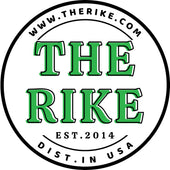From Seed to Remedy: Exploring the World of Medicinal Herbs and Handcrafted Goods
Introduction
In the bustling world we live in, where synthetic medications and treatments dominate, the interest in natural remedies has witnessed a significant resurgence. The timeless connection between humans and plants has been celebrated for centuries, as many cultures recognize the invaluable contributions of medicinal herbs. From soothing teas to potent tinctures, these gifts from nature play an essential role in holistic healing. This article dives into the fascinating journey from seed to remedy, exploring the world of medicinal herbs and handcrafted goods, their historical significance, and the revival of traditional practices in modern times.
Chapter 1: The History of Medicinal Herbs
Ancient Beginnings
The history of medicinal herbs is as old as human civilization itself. Archaeological findings suggest that as far back as 60,000 years ago, our ancestors utilized plants for medicinal purposes. Ancient cultures such as the Egyptians, Chinese, and Indians meticulously cataloged the healing properties of various herbs. The well-preserved records of the Ebers Papyrus, dating to around 1550 BC, detail over 700 remedies, showcasing the sophisticated understanding of herbal medicines at the time.
Traditional Medicine Systems
Different civilizations developed their medicinal systems, often centered around the unique flora of their regions:
- Traditional Chinese Medicine (TCM): Emphasizes the balance of Qi (energy) and the interplay of Yin and Yang, utilizing herbs like Ginseng and Astragalus to restore health.
- Ayurveda: The ancient Indian system that focuses on balancing the body's doshas (Vata, Pitta, Kapha), utilizing herbs such as Ashwagandha and Turmeric.
- Native American Medicine: Indigenous tribes adapted to their environments, using herbs like Sage and Echinacea for healing and spiritual purposes.
Chapter 2: Understanding Medicinal Herbs
What Are Medicinal Herbs?
Medicinal herbs are plants that have therapeutic properties and can be used for healing and wellness. They may be consumed in various forms, including teas, extracts, powders, and oils, offering a natural alternative or complement to conventional medicine.
The Science Behind Healing Herbs
The efficacy of medicinal herbs lies in their active compounds, which can have pharmacological effects on the body. Some common compounds include:
- Alkaloids: Often found in herbs like Belladonna, they can have powerful effects on the nervous system.
- Flavonoids: Present in plants like Ginkgo Biloba, known for their antioxidant properties.
- Triterpenoids: Found in herbs such as Ginseng, recognized for their immune-boosting abilities.
The Benefits of Herbal Remedies
The use of herbal remedies can offer numerous benefits, including:
- Holistic Healing: They promote overall health and well-being rather than just alleviating symptoms.
- Fewer Side Effects: Many medicinal herbs have a lower incidence of side effects compared to synthetic drugs.
- Accessibility: With the resurgence of home gardening, many people are cultivating their herbs at home.
Chapter 3: Cultivating Medicinal Herbs
Getting Started with Gardening
Growing your medicinal herbs can be both a rewarding and practical endeavor. Here are steps to get started:
- Choose Your Herbs: Begin with a few easy-to-grow herbs such as Basil, Mint, or Chamomile.
- Understand Your Environment: Assess sunlight, soil quality, and climate to optimize conditions for growth.
- Use Quality Seeds: Purchase seeds from reputable suppliers to ensure genetic integrity.
- Soil Preparation: Use organic compost and ensure proper drainage for healthy growth.
Harvesting and Storing Herbs
After nurturing your herbs, proper harvesting and storage are crucial. This involves:
- Timing: Harvest at peak maturity for maximum potency.
- Drying: Hang herbs in a cool, dry space away from direct sunlight when drying.
- Storage: Use glass jars to store dried herbs, ensuring they are stored in a cool, dark place.
Chapter 4: Crafting with Medicinal Herbs
Popular Forms of Herbal Remedies
Once harvested, medicinal herbs can be transformed into various remedies:
- Teas: Infusing dried herbs in hot water to create soothing beverages.
- Tinctures: Concentrated herbal extracts made by soaking herbs in alcohol or vinegar.
- Salves and Ointments: Infusing herbs in oils to create topical applications for skin ailments.
- Herbal Capsules: Grinding dried herbs and placing them in capsules for convenient consumption.
Handcrafted Goods and Their Connection to Medicinal Herbs
The realm of handcrafted goods complements the world of medicinal herbs. Artisanal products such as herbal soaps, essential oils, and infused oils reflect the artistry involved in crafting with nature. These products often serve holistic purposes, enhancing both beauty and health.
Chapter 5: Navigating the Modern Herbal Market
Understanding Products and Quality
With the increase in demand for herbal products, consumers must be informed about quality and efficacy:
- Label Scrutiny: Always read labels to check for purity and absence of fillers or additives.
- Third-Party Testing: Look for brands that have their products tested for potency and contaminants.
- Certifications: Organic certifications ensure products are grown without synthetic pesticides and fertilizers.
Finding Local Herbalists and Artisans
Supporting local herbalists and artisans not only benefits personal health but also fosters community resilience. Local markets, herbal shops, and eco-friendly fairs often present an array of high-quality, handcrafted herbal goods. Engaging with local providers allows individuals to learn about the origins of their remedies and the ethics behind them.
Chapter 6: The Therapeutic Use of Medicinal Herbs
Common Medicinal Herbs and Their Uses
Here is a brief overview of some popular medicinal herbs and their therapeutic uses:
- Chamomile: Known for its calming effects, perfect for relieving anxiety and promoting sleep.
- Lavender: Often used for its relaxing properties and aid in Aromatherapy.
- Ginger: Recognized for its anti-inflammatory properties and benefit in digestive health.
- Echinacea: Commonly utilized to boost immune system function and prevent colds.
- Turmeric: Known for its potent anti-inflammatory and antioxidant properties.
Precautions and Considerations
While medicinal herbs offer numerous benefits, they should be used with caution. Consult a healthcare provider before integrating new herbal remedies, especially if pregnant, nursing, or on other medications. Some herbs may interact negatively with prescribed drugs, underscoring the importance of informed choices.
Chapter 7: The Future of Medicinal Herbs and Handcrafted Goods
Revival of Traditional Practices
As the global community shifts towards sustainability, there is a growing interest in traditional practices of herbalism and crafting. This revival aligns with modern wellness trends emphasizing holistic and natural approaches to health.
Sustainability and Ethical Sourcing
The future of medicinal herbs will be heavily influenced by sustainability practices. Consumers increasingly favor ethically sourced products that respect the environment and support local farmers. Engaging in permaculture and sustainable farming methods can ensure the longevity of medicinal species and biodiversity.
Conclusion
The journey from seed to remedy is a profound tapestry woven from history, culture, and nature. As we continue to explore the world of medicinal herbs and handcrafted goods, we not only tap into their therapeutic benefits but also connect with the ancient traditions that have guided humanity through the ages. Embracing these natural alternatives enriches our lives, fosters a deeper appreciation for our environment, and inspires a return to our roots—all vital for holistic well-being in today’s world.





Leave a comment